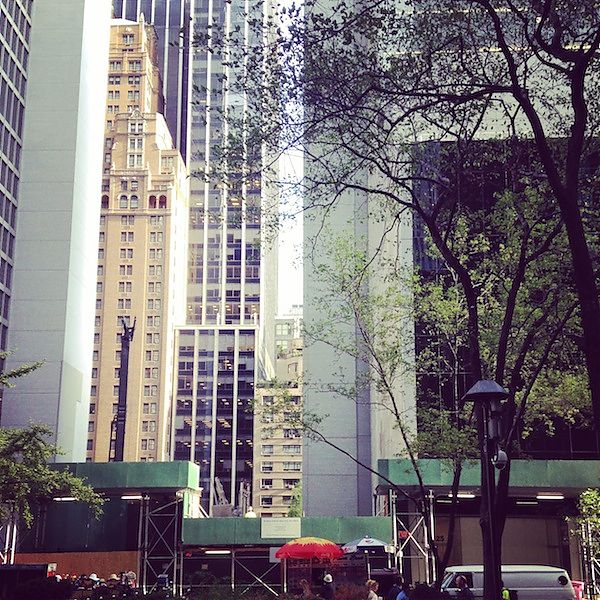Saving Buildings with Social Media

The gap where the Folk Art Museum used to be, 53rd Street.
In David Macaulay’s illustrated book, “Unbuilding,” published in 1980, a sheikh buys the Empire State Building and has it dismantled, piece by piece, to be reassembled in the Middle East. Macaulay uses this premise—which, when I was seven, seemed like science fiction—to illustrate what goes into unmaking a building: the materials, the methods, the fastenings, the layering. It takes a whole book to take a skyscraper down, and that was part of the point. The slowness of the process, the idea that a building can’t just disappear, was a lesson in itself, and one extraneous to the Empire State Building’s significant particulars. Obviously, post-9/11, the fantasy takes on a different resonance.
Today, we don’t need Macaulay’s detailed illustrations to see buildings being unbuilt. We call it “destructoporn” (since 2007, according to Urban Dictionary) and it comes, unbidden, via digital media. Where did I see that Tod Williams and Billie Tsien’s Folk Art Museum, just thirteen years old, was down to steel and rubble? The art critic Jerry Saltz’s Instagram. How did I follow the destruction of Bertrand Goldberg’s Prentice Women’s Hospital (1975), in Chicago, made of poured-in-place concrete that took weeks to demolish last fall? Tweets from the Windy City’s flock of architecture observers. Twitter also brought me the news, in September, of the unbuilding of John Johansen’s Mechanic Theatre (1967), in Baltimore, and a view of the wrecking ball demolishing a hundred-and-twenty-nine-year-old commercial row in Dallas. Unfortunately, except for the copper-bronze façade of the Folk Art Museum, the parts of these buildings aren’t being shipped anywhere except the landfill. No Middle Eastern resurrection to come. Something glassy instead.
On X
Follow @LangeAlexandraOn Instagram
Featured articles
CityLab
New York Times
New Angle: Voice
Getting Curious with Jonathan Van Ness